#lake guatavita
Explore tagged Tumblr posts
Text
instagram
Episode 200: The Lost City of El Dorado *IS LIVE*! Image 01: A golden raft depicting the Zipa Ritual was found in a Colombian cave. The artifact dates back to the 1300s and serves as evidence of Muisca tradition. Image 02: Lake Guatavita was sacred to the Muisca people. As per tradition, the chief of the Muisca people would paint himself in gold dust and bathe in the lake. Afterwards, gold and jeweled artifacts were also tossed into the lake to honor the sun deity. Image 03: Gold plated sculptures known as Tunjos that have been found in Lake Guatavita. Image 04: Depiction of what a Muisca Zipa would look like during the golden ritual. Image 05: Countless explorers have tried to pull out treasure from Lake Guatavita, but only a few pieces have been found. Here we see some of the gold recovered at El Museo del Oro. Image 06-07: Images of Percey Fawcett, British explorer who mysteriously went missing while searching for the Lost City of Z in the Amazon. Image 08: LiDAR imaging taken in 2019 has revealed previously lost garden cities in the Amazon. What do you guys think? Is Lake Guatavita full of gold? Is El Dorado real?
#the lost city of el dorado#el dorado#photo dump#lake guatavita#percey fawcett#let's get haunted#still not beating the desire to tag this the road to el dorado#that's just such a good movie#Instagram
5 notes
·
View notes
Photo


American Holocaust — David E. Stannard
#andes#ecuador#colombia#muisca#lake guatavita#meteor crater#museo del oro#bogota#american holocaust#American Holocaust: The Conquest of the New World#holocaust#David E. Stannard#history#nonfiction#spanish#north america#south america#indigenous#atypicalreads#nsnv#colonialism#mesoamerica#pre-columbian#central america#literature#the americas#scans#native american
0 notes
Note
Would you say that the indigenous people including Chel from The Road to El Dorado are Muisca, considering that the myth of El Dorado came from wishful thinking of greedy conquistadors wanting more gold after "discovering" the Muisca people and the Golden Man or El Hombre Dorado?
My issues with The Road to El Dorado are pretty numerous and the portrayal of the Indigenous people of El Dorado is at the center of it. Colombia is my home country and while I am not Muiska, I am Indigenous to Colombia (Iku Arhuaco) and it is what I plan to do in my graduate studies. Now I don't have the time to really like, put sources since this is going straight from the mouth. (Also rip english in case i mess up)
To answer your question before I delve into it, I would say no, that I would not consider them Muiska. The people of El Dorado bear little resemblance to the actual Muiska, be it historical or now, other than the tie between El Dorado and the Muiska people. I will say that I also won't accept any submissions from the movie as well.
Chel and her people are quite divorced from what the Muiska culture is. I've seen many people even confuse it with more Mesoamerican tribes.


The only one who truly wears gold is the zipa, such as shown in the middle image (Tisquesusa) and the legend of El Dorado comes from the ceremony at Lake Guatavita, where it was said the zipa would cover himself in gold dust and make offers to gods.
The true clothing worn is actually plentiful. As skilled weavers of cotton and sheep wool, the clothing focuses on geometrical and animal-based designs that were sacred. There is little to see in any of the designs, and in the case of Chell, she is barely clothed which is definitely not something that bodes well representation-wise considering how sexualized she is.
The architecture is completely different as well, with no true reference to what it actually looks like:
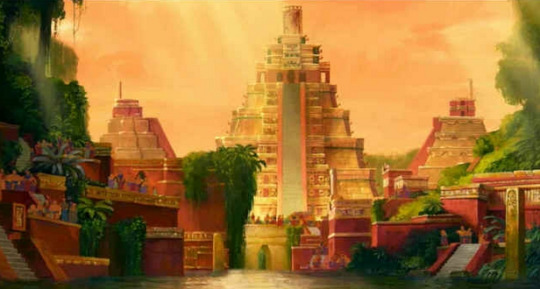

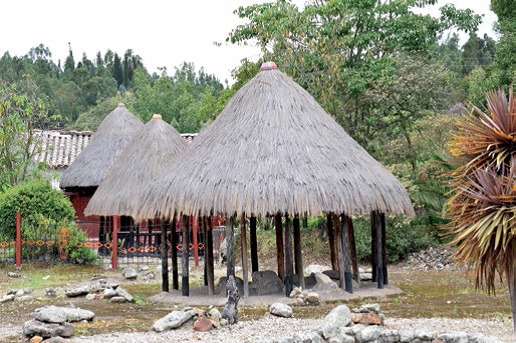
What is most important to realize is that there are still Muiska people in Colombia today, and there was no input from them in the movie at all.


It's an issue a lot of these movies had and it made them worse. I could probably go on for much longer, but I should probably cut this down. But yeah, I wouldn't consider them Muiska. (Sorry for the late reply it has been like a solid few months since this asks lmao)
197 notes
·
View notes
Text
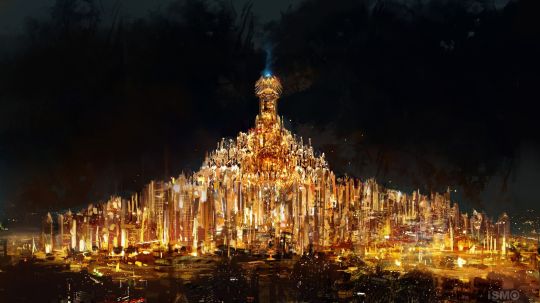
The Hunt: El Dorado, Fabled City of Gold, Remains Hidden in the Amazon
Centuries have seen countless explorers brave hardships to find the fabled city.
An ancient city of gold somewhere in South America is rumored to have been so fabulously opulent that it has become an expression for any place where people can amass great fortunes. But it has been so elusive that it has become synonymous, like the Holy Grail, with a prized object long sought but never found. Countless men have given their lives in the search for its riches as they ran out of supplies and food, were felled by disease, or encountered violent resistance along the way.
The goal of numerous explorers over centuries, from crews with wooden ships and horses to teams with drones and radar, El Dorado is a lost city, reportedly stretching over great distances in the Amazon rainforest and hidden from prying eyes by its remoteness and the warlike peoples in the forest around it. (The region got its name, in fact, from Spanish explorer Francisco Orellana, who compared the fighting women he encountered during his own search with the Amazons of ancient Greece.)
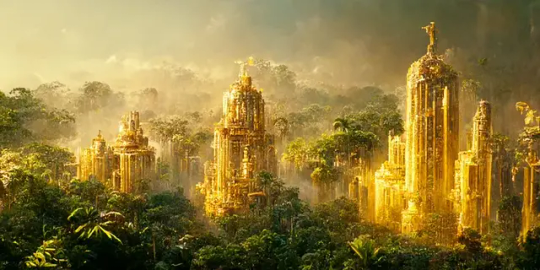

Tales of El Dorado, its name Spanish for “the golden,” began with the Muisca peoples’ perhaps-mythical account of a tribal chief who, in an initiation rite, coated himself in gold. He then went onto Lake Guatavita, near present-day Bogotá, threw a pile of gold objects into the water, and washed the gold off himself as his attendants also threw an abundance of gold objects into the lake. The 16th-century Spanish referred to him as the Golden Man or the Golden King.
“This is the ceremony that became the famous El Dorado, which has taken so many lives and fortunes,” according to a 1638 letter from writer Juan Rodríguez Freyle. That pile of loot was soon fused in the lore with an account of an entire city made of gold. Others posited that the city was called Manoa and was situated on the shores of a legendary Lake Parima, which has also never been found.
Supposedly one of the first to claim he visited it was the Spanish explorer Juan Martinez, who reported that the locals had brought him there blindfolded in 1531 and allowed him to witness it, and that he traveled an entire day through its streets before reaching the emperor’s palace.
When Francisco Pizarro conquered the gold-rich Inca civilization in Peru in 1532, Spaniards believed all the more firmly in the fabled El Dorado. Francisco de Orellana, a relative of Pizarro, unwittingly traveled the entire length of the Amazon, the world’s longest river, in his search for it.
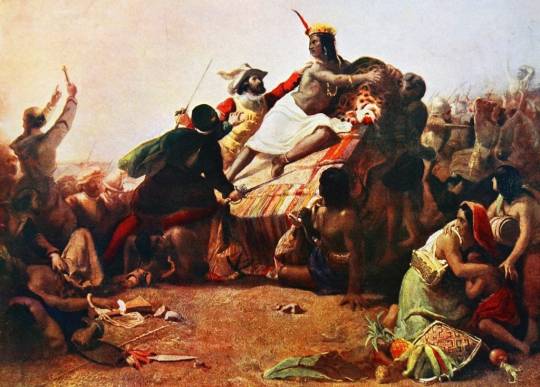
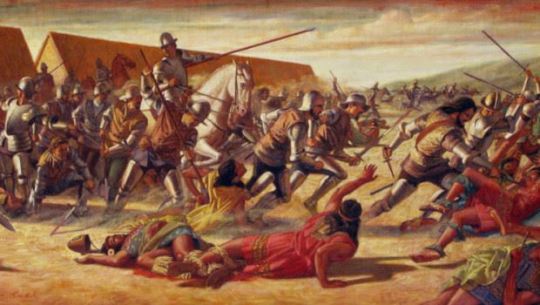

Some gold did turn up in a lake, seeming to justify the continued search. After he found Guatavita, a sacred lake in the Andes, in 1537, conquistador Gonzalo Jiménez de Quesada partly emptied it using a bucket chain. From its depths emerged a few thousand pesos of gold.
Bogotá entrepreneur Antonio de Sepúlveda, for his part, cut an enormous notch in the bank of the lake in 1580, removing a great deal of water before the notch collapsed and killed many of the workers. For his trouble, he uncovered three times as much gold as Quesada had, and sent it to King Philip II of Spain. Alexander von Humboldt, the 19th-century German explorer, would calculate that there could be as much as $300 million in gold in the lake.
English explorer Sir Walter Raleigh went looking for El Dorado in 1594, followed by the Spanish conquistadores, who scoured modern-day Colombia, Venezuela, Guyana and Brazil in the search. Less well-known expeditions continued over the 17th and 18th centuries, bodies piling up but ultimately turning up nothing.
In findings from a major scientific investigation, Von Humboldt would claim, ca. 1800, to have disproven the existence of the lake El Dorado is meant to have flanked. In the following decades, two other researchers came to the same conclusion.
But the legend did not die. The search was revived a century later, when an English company drained the lake almost entirely. Despite their efforts, they extracted artifacts worth only about £500, some of which went to the British Museum, some of which sold at Sotheby’s London. In 1965, the Colombian government designated the lake as off-limits to further attempts.
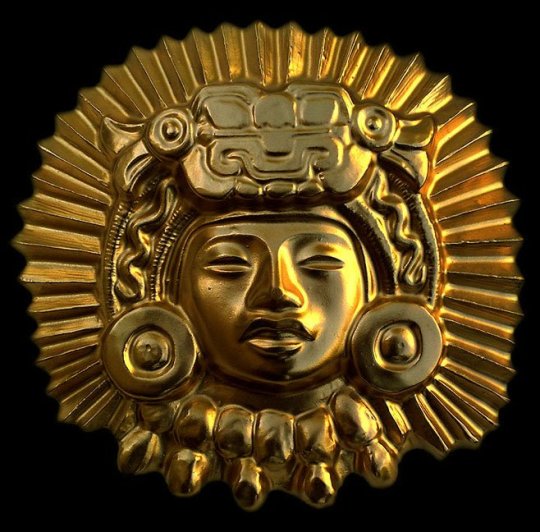

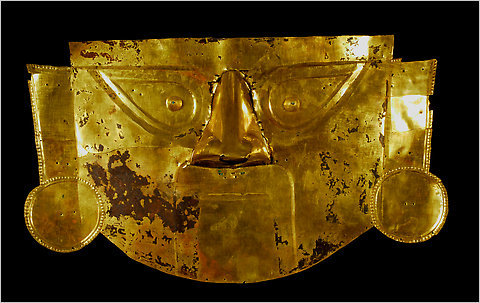
The quest continues with the help of modern technology. A team led by Venezuelan archaeologist-explorer Jose Miguel Perez-Gomez went looking, employing aerial and satellite remote sensing surveys obtained from NASA’s Shuttle Radar Topography Missions (SRTM), the Landsat Enhanced Thematic Mapper Plus (ETM+) instrument, and TanDEM-X synthetic aperture radar (SAR) sensors from the German Aeropsace Center’s Microwave and Radar Institute, according to a 2019 paper. Of all the unlikely results, their findings strongly resembled the outlines of a lake in a map drawn by none other than Sir Walter Raleigh.
The area is not without rich natural resources, so dreams of a city of gold can perhaps be forgiven. Illegal extraction operations are underway to this day, in fact, in what the Venezuelan government in 2016 designated the Orinoco Mining Arc, which covers 12 percent of the country’s territory and is rich not only in gold but also bauxite, coltan, and diamonds, possibly totaling some $2 trillion in value. You can literally see the modern gold mining from space: in 2021, an astronaut passing over eastern Peru in the International Space Station used a Nikon camera to snap a photo that reveals numerous gold prospecting pits.
Over the years, El Dorado has shown up in popular culture countless times, from a 1989 Neil Young record to video games, a board game, and the Cadillac Eldorado. So even as the city has remained stubbornly hidden over centuries, it is, in its way, all around us.
By Brian Boucher.


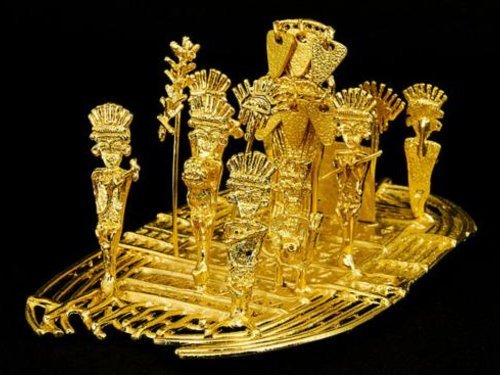
#The Hunt: El Dorado Fabled City of Gold Remains Hidden in the Amazon#El Dorado#the lost city#lost and found#Francisco Orellana#Juan Martinez#Francisco Pizarro#Gonzalo Jiménez de Quesada#gold#silver#ancient artifacts#archeology#archeolgst#history#history news#ancient history#ancient culture#ancient civilizations#inca empire#long post#long reads
22 notes
·
View notes
Text
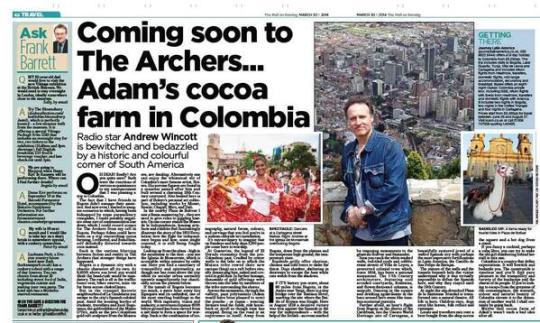
Article from Mail about Andrew Wincott in Colombia (scroll down to read the article)
Coming soon to The Archers...Adam Macy's cocoa farm in Colombia!
written by Andrew Wincott for Mail on Sunday Travel (31 March 2014)
Radio star Andrew Wincott is bewitched and bedazzled by a historic and colorful corner of South America
Oh dear! Really? Are you quite sure?' Such were the reactions of various acquaintances to my announcement that I was planning a trip to Colombia.
The fact that I have friends in Bogota didn't assuage their anxieties. And now even I started to imagine scenarios in which, having been kidnapped by some paramilitary renegades, I could possibly negotiate some sort of communication line down which I could record scenes for The Archers from my cell in Bogota. Perhaps Adam could have been on a trip researching cocoa farming, I reflected, and found himself deludedly diverted towards coca instead.
Such is the curious blurring between fiction and reality in The Archers that stranger things have happened.
Bogota is a dynamic city with a chaotic character all its own. At 8,500ft above sea level you would think the head-rush would be mandatory. The rush is all in the traffic: buses veer, bikes swerve, taxis vie for fares across choked lanes.
But in the tranquil historic neighbourhood of La Candelaria you escape to the city's Spanish colonial past. Amid the teeming hordes of students, travellers and local Bogotanos, the gold exhibits of the Museo D'Oro, such as the pre-Colombian gold raft sculpture from the Muisca era, are dazzling.
Alternatively one can enjoy the whimsical wit of Colombia's most famous artist, Botero. His porcine figures are found in a museum named after him and built around a charming 18th Century courtyard. Also housed here is part of Botero's personal art collection, including works by Monet, Renoir, Chagall, Miro, and Dali.

Taking in the view: Andrew at the Iglesia de Monserrate overlooking Bogota.
In the nearby Plaza de Bolivar I saw a llama sauntering by - they are used to give rides to giggling tourists. On one corner stands the Museo de la Independencia, housing artefacts and exhibits that fascinatingly illustrate the story of the 1810 Revolution: how the fight for independence began and how, some might contend, it is still being fought today.
Looking up from the plaza - high in the mountains to the east - you see the Iglesia de Monserrate, which is accessible within minutes by cable car. Here you find a sanctuary of tranquillity and spirituality, as though one has risen above the city while its secular urban unreality sprawls magnificently but chaotically across the plateau below.
If the tumult of Bogota becomes too much, a mere hour away lies Zipaquira and its cathedral, one of the most startling buildings in the world. With ingenuity, vision and audacity, a cavernous expanse 600ft below ground has been carved from a salt mine to form a space for worship.
Such is the combination of iconography, natural forms, colours, and carvings that you feel you're in a sodium-chloride art installation.
It's extraordinary to imagine that on Sundays and holy days 3,000 people come here to worship.
At Guatavita, the legend of El Dorado resonates from the pre-Colombian past. Cradled by crater walls is the lake on to which the Muisca tribe rowed their new cacique (king) on a raft before ritually immersing him, naked and covered in gold dust. In further homage, thousands of gold offerings were thrown into the lake by members of the tribe surrounding the shores.
Across the mountains, through the valleys, past polytunnels (Adam would have been pleased to note) the poncho - or ruana - wearing farmers tend the fields, ride horseback or stroll as though time has stopped. Being on the road is an experience in itself. Away from Bogota, down from the plateau and the temperate high ground, the temperature rises.
Roadside grills offer chorizos, chicken and cold beers to slake the thirst. Dogs slumber, sheltering in doorways to escape the heat while cats watch from the shadows.
If it's history you crave, about 90 miles from Bogota, in the Andes near Tunja, there is a tiny bridge over the Teatinos River, marking the site where the Battle of Boyaca was fought.
Here in August 1819 a decisive victory was won against the Spanish in the war for independence - with the help of the British - an event marked by imposing monuments to the generals Bolívar and Santander.
Soon you reach the white-washed walls, red-tiled roofs and cobblestone streets of Villa de Leyva, a preserved colonial town which, since 1954, has been a national monument.
The 17th Century architecture, featuring cool arcaded courtyards, fountains, and flower-festooned columns, is unspoilt. Dancing in the square and drinking aguardiente in the bars around here seem like timeless nocturnal pursuits.
Further afield, an hour's flight from Bogota on the shores of the Caribbean, lies the Unesco World Heritage site of Cartagena, a beautifully restored jewel of a walled Spanish city with perhaps the most impressive fortifications in Latin America, the Castillo de San Felipe de Barajas.
The stature of the walls and the tunnels beneath help the visitor understand why it was virtually impossible to defeat the Spanish here, and why they stayed until the 19th Century.
At night the sun-drenched Plaza de la Santisima Trinidad is transformed into a natural theatre. All life is here. Children race, dogs strut like horses, folk reflect and ruminate.
Locals and travellers mix over a beer bought from the shop across the square and a hot dog from a stand.
If you fancy a cocktail, perhaps a cuba libre, you can try to wake the old girl slumbering behind her stall to mix one.
Colombia is a country that defies expectations. It will bewitch and bedazzle you. The countryside is timeless and you'll find pure pleasure in the tranquillity and variety of the landscape and the charm of its people. If you're looking to escape from the greyness of the commonplace, the warmth, colour and natural beauty of Colombia elevate it to the dimension of another world. I shall certainly be going back.
Maybe that cocoa farm of Adam's wasn't such a bad idea after all.
13 notes
·
View notes
Note
More history stuff!!! (I hope this isn't bothering you ;-;)
The legend of El dorado was born from the greed of conquistadors, essentially. They heard about a group called the Muisca, who as part of their coronation ceremony, would cover themselves in gold and take a dip in the lake Guatavita, leaving the lake filled with gold. Ofc, this wasn't enough, so they actively looked for the fabled El Dorado (fabled not by the locals, but by themselves). However, they did find a lot of platinum on their attempts to get to El Dorado, but this led to a problem where people would make counterfeit coins with platinum instead of gold. The Spanish government's response was to dump their entire platinum supply into the ocean. Their entire supply. Of one of the rarest metals on Earth. Into the ocean.
(Also can I maybe go by 🫘?)
It was the psihipqua (closest equivalent to us would be the chief/king) that would take gold trinkets and offerings to the middle of Lake Guatavita for the golds on a boat. The coronation is a mytho based on what I found, but those two combined are one of the first instances of "El Rey Dorado" or The Golden King which would lead into the legend of El Dorado.
From there, the legend of the city was mostly associated with Colombia, Venezuela, parts of Guyana and northern Brazil. Eventually, the legend transformed into the "Seven Cities of Gold" which led later expeditions all the way into modern New Mexico.
Most likely, the stories were made up by nobles and officers to motivate soldiers when exploring. It doesn't help that gold was a popular resource for many of the tribes in the Americas. The native's had lots of artifacts (jewelry, vases, etc) made with precious stones and metals, so the Spanish and Portuguese (don't forget about those fuckers too) made an assumption.
I didn't hear about the platinum, though, so that's interesting!
13 notes
·
View notes
Text
Today, on August 7th, 1538, the city of Bogotá, the current capital of Colombia, was founded by the conquistador Gonzalo Jiménez de Quesada, a man known both for his brutality and his crazed obsession with finding El Dorado (see him below).

To do this, Jiménez de Quesada had to dethrone two of my very distant relatives: first, my great-great-great-great-etc.-etc. (probably half) uncle Tisquesusa, and then his younger (probably half) brother, Sagipa (pictured below, in that order). Zipa (or, the European equivalent, "King") Tisquesusa was the last legitimate ruler of Bacatá, as he was last to occupy the throne following Muisca heritage law, which mandated that the position should pass to the nephew, by way of the matrilineal line, of the previous Zipa. A mispronunciation of his title, 'Zipa of Bacatá,' by the Spanish led to 'Bogotá' being written (and pronounced) the way it is today.


Death of Tisquesusa: Upon Gonzalo Jiménez de Quesada's return from a disastrous expedition to the Neiva region, his brother (yes, this is a tale of two Spanish brothers vs. two Muisca brothers), Hernán Pérez de Quesada, informed him of Tisquesua's location at his palace in Facatativá (the Zipa had previously eluded the Spanish). Gonzalo Jiménez de Quesada attacked under the cover of night, taking Tisquesua's retinue and guards by surprise. In the chaos that ensued, Tisquesusa was able to make a run for it, fleeing into the mountains surrounding the palace, where he had the misfortune of encountering a Spanish soldier. The soldier ran Tisquesusa through with his sword without recognizing him, then robbed him of his clothes and adornments. His body was found by his surviving retinue after they noticed vultures circling the area. They buried him in an unknown location, and the Spanish declared the whole affair a loss since they were unable to question Tisquesusa about the location of his famed treasure.
Death of Sagipa: Although Sagipa, Tisquesusa's younger brother and the general of his armies, was not next in line for the throne according to Muisca law, the legitimate heir, Chiayzaque, Prince of Chía, wanted to make peace with the Spanish. This did not sit well with his people, and I can't imagine it sat very well with Sagipa, whose brother had just been murdered. Despite not having the support of the rest of the Muisca royal family or nobles, Sagipa had himself named Zipa and went to war with the Spanish, with some notable success. (Btw, Chiayzaque complained about this to Gonzalo Jiménez de Quesada, but lol amiright?) However, upon hearing that the ferocious Panche Kingdom, the old enemy and neighbour of the Muiscas, was planning an attack, Sagipa was forced to pact a truce with the Spanish to fend them off. Together, they defeated the Panche and decided to celebrate their victory by throwing a party. During the festivities, when everyone was relaxed and having a good time, Jiménez de Quesada had Sagipa arrested so that he could interrogate him regarding the location of Tisquesusa's (and, now, Sagipa's) treasure - the one they hadn't found when they killed Tisquesusa. Sagipa, who could not, or would not, provide it, or any equivalent sum, was tortured, became silent, endured a sham trial where he was represented by Gonzalo Jiménez de Quesada's brother, Hernán, and found guilty by Jiménez de Quesada, and finally died in Spanish custody from wounds he sustained during torture.
Zipa-less, Bacatá (or Bogotá as it would hence become known) was up for the taking. And that's how the city I live in was founded.
But the real irony of this tale? Gonzalo Jiménez de Quesada died trying to locate El Dorado, never knowing that he had already found it many years before in the figures of Tisquesusa and Sagipa. To ascend the throne and become the Zipa of Bacatá, Muisca Princes had to traditionally complete the El Dorado ceremony at the Sacred Lake of Guatavita (although there is some question as to whether this ceremony had been discontinued by the time the Spanish arrived, the legend of El Dorado, the golden King, was well known in the surrounding regions, which is how the Spanish got wind of it).

In this ceremony (see above), the 'Crown Prince,' covered from head to toe in gold dust, and accompanied by four other Princes, all regally adorned, would navigate out to the middle of the lake on a raft to make an offering of gold and emeralds to the deity (some sort of snake or dragon) that inhabited it. The Crown Prince would then return to the shore, King, to the jubilation of his people.
The more you know, right?
Anyway, thanks for coming to my TED talk.
#today is a day#thank you for listening#genealogy#ancestry#family history#native american#spanish colonialism#mestizaje#bogota#el dorado
3 notes
·
View notes
Text

On this day:
EL DORADO
On February 24, 1529, the rich, young adventurer Ambrosius Dalfinger became governor of Venezuela. Within the year, Ambrosius and an expedition of 180 men embarked on an exploration of the country, fuelled by rumors of a city of gold hidden in the Andes: El Dorado. Dalfinger had learned of an interior village of sun worshippers. Their buildings were plated, and their leader was gilded with gold. In the mountains was a lake, full of gold. On the second jungle expedition, Dalfinger died from a poisoned arrow, and most of his men were lost. Hundreds of fortune-hunting expeditions set out afterwards. Disaster found them all.
In 1536, Gonzalo Jiménez de Quesada and his army invaded the high mountaintop Hunsa village. The village's neat houses were constructed of wood or wicker and hung with golden plates. The chief's place was covered with beaten gold, and his throne was gold and emeralds. Villagers possessed cloth bags filled with emeralds and gold dust. Men had gold rings in their ears and noses and on their arms. Quesada, however, did not believe he had found El Dorado and continued to search for a paradise island in a salt lake.
El Dorado, a phrase interpreted as "The Golden Place," actually meant "The Gilded One." Tribesmen would smear resin on a new leader and then blow gold dust over his body. Carried by raft to the center of the sacred Lake Guatavita, the chief would conduct ritual offerings to the deity, casting gold and jewels into the water before diving in and rinsing the powdered gold from his own form. El Dorado was considered a legend until 1969, when two farm workers discovered, in a cave, an exquisitely wrought golden model of a raft carrying eight tiny oarsmen and their golden chief. Although Lake Guatavita has been located, its icy depths have never been reached.
Text from: Almanac of the Infamous, the Incredible, and the Ignored by Juanita Rose Violins, published by Weiser Books, 2009
2 notes
·
View notes
Text
LAKE GUATAVITA I THINK ABOUT YOU EVERYDAY
0 notes
Text
Research on El Dorado - The Lost City of Gold
ORIGIN / LOCATION
The legend of El Dorado originates from South America, particularly from the Muisca people of Colombia. Originally, El Hombre Dorado (The Golden Man) or El Rey Dorado (The Golden King) was the term used by the Spanish in the 16th century to describe a mythical tribal chief/king (called zipa) who was said to cover himself in gold dust and submerged into Lake Guatavita.
Lake Guatavita was located in the Andes Mountains near Bogotá, Colombia and t's a natural lake surrounded by lush vegetation and has been the subject of various expeditions and searches for gold.
In the Muisca territories, there were a number of natural locations considered sacred, including lakes, rivers, forests and large rocks. People gathered here to perform rituals and sacrifices mostly with gold and emeralds and Lake Guatavita was one of them.
THE TRIBAL CEREMONY
According to the legend, the tribal chief (zipa) covered himself in gold dust before paddling out onto Lake Guatavita on a raft. He would then ceremonially wash off the gold into the lake as an offering to the underwater god while his attendants threw objects made of gold, jewels, emeralds, and precious stones into the lake such as tunjos.
SPANISH CONQUEST
The legend of El Dorado played a significant role in the Spanish conquest of the Americas. Francisco Pizarro and Gonzalo Jiménez de Quesada were two of them, driven by the desire to find the fabled city of gold and exploit its riches.
EXPLORATIONS AND EXPEDITIONS
During the 16th and 17th centuries, Europeans still fascinated by the New World, believed that this hidden city of immense wealth existed. Over the centuries, numerous explorers and adventurers have sought to uncover the truth behind the legend of El Dorado. Expeditions were launched, and tales of lost cities and hidden treasures abounded but the actual El Dorado has never been found and all of it ended in failure.
The illustration of El Dorado's location on maps only made matters worse, as it made some people think that the city of El Dorado's existence had been confirmed. It's existence on Lake Parime was marked on numerous maps until its existence was disproved in a Latin America expedition.
SYMBOLISM AND CULTURAL ASPECTS
The legend of El Dorado has come to symbolize the allure of wealth, the quest for riches and the exploration of the unknown. It has inspired many works of literature, art and film, perpetuating its mystique through the ages.
While the literal El Dorado may not have been found, archaeological discoveries in the region have uncovered evidence of the Muisca civilization and their intricate goldwork. These discoveries shed light on the cultural significance of gold in pre-Columbian societies. It has left a lasting legacy on Colombian culture and serves as a reminder of the rich history of the Americas before the arrival of European colonizers.
** These were information from background research I did since I wanted to have an idea about the actual legend of El Dorado and its story since it inspired my base concept.
0 notes
Text
EL DORADO a BIBLICAL ADORATION OF GOLD

From the adoration of Aaron's golden calf to the criminal Netanyahu, to the barren gold hills of California lies in-between the conquest of America's Golden EL DORADO, summed up, it is simply greed. We can also sum up Netanyahu shielding himself into power bowing down to USA like the Jadean king Herod to the Romans by killing children to remain in their threaten power. History has a way of repeating itself and we have not seen the end of it.
Read more: Golden calf - Wikipedia (the worshiping of god in the pursue of greed).
Herod the Great - Wikipedia (If killing children makes you great, what can we say about Netanyahu).
WHAT IS THE EL DORADO and did it exist?
El Dorado is commonly associated with the legend of a gold city, kingdom, or empire purportedly located somewhere in the Americas. Originally, El Hombre Dorado ("The Golden Man") or El Rey Dorado ("The Golden King"), was the term used by the Spanish in the 16th century to describe a mythical tribal chief (zipa) or king of the Muisca people, an indigenous people of the Altiplano Cundiboyacense of Colombia, who as an initiation rite, covered himself with gold dust and submerged in Lake Guatavita. (El Dorado - Wikipedia)
youtube
856-1 LINK: https://youtu.be/1GQie-UzKRE
Hear out Simon Whistler's sarcastic interpretation of EL DORADO: LINK: https://youtu.be/qdfPua-uTYE
Following is the amazing archaeological search of Albert-Lin "EL DORADO".
856-2 LINK: https://ok.ru/video/2704082471550

El Dorado is a 1988 Spanish film written and directed by Carlos Saura.
MOVIE:
The film is about an expedition down the Amazon and Orinoco rivers in 1560 by Spanish soldiers searching for the fabled city of gold, El Dorado. Taking some followers and family along on the journey, they descend into madness and battle the environment and each other. (El Dorado (1988 film) - Wikipedia)
IMdB rating: 6'4 RUN TIME: 2h 29m
856-3 LINK: https://ok.ru/video/7416242702899
SCRIPT: El Dorado (1988) Movie Script | Subs like Script

Aguirre, the Wrath of God is a 1972 epic historical drama film produced, written and directed by Werner Herzog. Klaus Kinski stars in the title role of Spanish soldier Lope de Aguirre, who leads a group of conquistadores down the Amazon River in South America in search of the legendary city of gold, El Dorado. The accompanying soundtrack was composed and performed by kosmische band Popol Vuh. The film is an international co-production between West Germany and Mexico. (Aguirre, the Wrath of God - Wikipedia)
IMdB rating: 7'8 RUN TIME: 1h 35m
856-4 LINK: https://ok.ru/video/3255521774280
1 note
·
View note
Text
i do hate how american latino literature always needs to include a musing on indigenous beliefs of latin america like thinking of colombian american writing idk im no authority but if your characters are not indigenous then it feels disingenous, at best some kind of halfhearted acknowledgement of colonization (which could be MUCH better done in other ways imo). like ingrid rojas contreras is good at this bc she writes mixed characters who experience racism and have connections to indigenous beliefs, practices, etc. while her narratives acknowledge the erasing effects of colonization on the individual identity level and the exploitative systems at the macro level. ms patricia engel i am unsatisfied by these continued musings about what the muisca beliefs about the origins of the world were like i can only assume it's a market/publisher pressure to exoticize for an american audience? esp bc the indigenous groups chosen are either genocided groups that are literally gone or are portrayed as gone even if they're not. like rojas contreras to my recollection doesnt name specific ethnic groups (a possible sin but also she's from and writes about santander which like does not have a huge indigenous presence today compared to other parts of colombia so it's more plausible that you wouldn't name a specific cleansed group) vs. engel who returns again and again to muisca mythology when like the only function of these references are to muse on the divisions between countries (in which case you would think it would be relevant to mention that muisca people are still around and that muisca people specifically are national emblems bc of lake guatavita and that colonialism has specifically exploited their memory and iconography to create national colombian identity while their actual descendants are forgotten). idk it's not the biggest of sins like i have no reason to think any of it is wrong and it does serve its small points in the narrative and i think it would be worse to omit any mention of indigeneity in your narrative about colombia and also these parsing outs dont necessarily exist the same way in colombia. i just wonder what the like market pressures are that make these writers do this.
#mio.txt#rip to a book that goodreads reviewers are stupid about for other reasons tho#im enjoying it! and maybe this will change as it goes on like regarding native stuff#there's so much to say about colombian ideas of indigeneity like#its not patricia engel's fault per se#nor is ingrid rojas contreras like a perfect writer or anything#i think with the state of colombian american writing rn and american latino writers tbh it's impossible to approximate a like#fair and accurate and kind portrayal of race relations in latin america that usa audiences will read and consume#i just think about it
0 notes
Text
And maybe the Muisca People Dumped gold into lake Guatavita because it was valuable to them.
Do you ever think about chickens that actually cross roads? Like it’s a weird thing, it probably happens hundreds of times every day. But every time one does it’s making a joke it’s not aware of. The chicken is putting on a stage play that it itself is not aware of. a daily occurrence turned into a string of sentences that’s played out. I wonder what happens when someone sees it. Do they quietly acknowledge that in front of them something that’s been immortalized in speech is happening, or do they smirk, take a picture and continue on. What would I do? Even so the chicken crossing said road has no clue what a road is, to it it’s just another surface, and other place to walk. It’s akin to the meso-american civilizations using gold in art unaware of the value to colonizers that would soon come over. Does e ignorance of the chicken make that immortalized sentence any less true, the chicken does not know why it crosses why do we automatically othe it’s meaning upon it? could there be a group of chicken who do understand? perhaps a group that noticed those subtle smiles of those who see them crossing, perhaps they know why. There were no Meso americans who knew the true value of that metal in the ground though and chances are no chickens are aware of the immortality they achieve when they walk over an asphalt river.
9 notes
·
View notes
Photo



Uncover The Mystery Behind Lake Guatavita – Colombia
Read More: https://bit.ly/2yrWYzs
#columbia#historical#places#history#lake guatavita#mysterious#southamerica#indiaimagine#mondaymotivation
0 notes
Text

~ Three Serpents (Tunjos).
Date: A.D. 10th–16th century
Place of origin: Colombia, Bogota and Tunja region, Guatavita Lake region
Culture: Muisca
Medium: Gold
#10th century#16th century#precolumbian#south america#colombian#colombia#bogotá#guatavita lake#gold#muisca#three serpents#serpent#tunjos#history#archeology#archaeology#museum
466 notes
·
View notes
Photo



Landscapes of Sacred Lake Of Guatavita.
3 notes
·
View notes